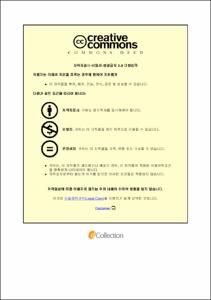자동차 안전무결성 수준(ASIL)에 기초한 FMEA 위험평가에 대한 연구
- Abstract
- FMEA is a technique that identifies all possible failure modes and their potential causes of a design or a process and evaluates their effects. Although it is very widely adopted in the manufacturing as well as service industries, its risk evaluation metric RPN has room for further improvement. With all the previous studies on improvement of RPN, it still has some drawbacks such as (i) subjective and inconsistent evaluating process, (ii) uniform weight allocation to its three components, (iii) numerical figures without practical meaning except priority which also is doubtful, and (iv) dependence on intuitions and personal experiences of the FMEA members.
This thesis suggests a new risk evaluation metric RPM based on ASIL for application to the automotive industries. ASIL is determined through a systematic and logical risk evaluation process, i.e. H&R of ISO 26262. RPM provides more realistic information on the magnitude of risk for each failure mode and its corresponding causes, compensating some drawbacks of the traditional FMEA. This thesis is structured as follows:
First, previous studies are reviewed on the traditional FMEA and the H&R process of ISO 26262 to develop a new risk evaluation metric and process. With FMEA, the works on the shortcomings of RPN and its improvement are reviewed. With ISO 26262, the works on H&R process and ASIL determination are mainly focused.
Next, a systematic model is proposed for classifying the three properties of the hazardous event and a refined procedure is suggested for ASIL determination. To determine a proper ASIL for each hazardous event with a proper safety goal, the right classes should first be determined for the three properties of the hazardous event; (i) severity of harm from the resultant accident, (ii) exposure to the relevant operational situation, and (iii) controllability to avoid the induced risks. ASIL can be clearly determined with right classes of these three properties. But no specific methodologies or processes for their classification can be found in ISO 26262, except only a rough guideline with a simplified set of illustrative tables. To perform a effective H&R in ISO 26262, an operational situation analysis model is suggested. The proposed model provides a specific method to get a more objective ASIL compared with that in the standard. Scrutinizing the current methodology, a refined method is developed. With an application example of “EPB system,” its effectiveness is validated for ASIL determination.
Finally, a modified systematic and logical approach for FMEA is suggested, which compensates some shortcomings of RPN with relevant strength of ASIL for Safety System. By comparing the objectives, determination procedures, and key conceptual differences of RPN and ASIL, a refined method of risk evaluation and a new risk metric RPM are devised. While the traditional FMEA provides only rough evaluation of relative risk for each failure, the proposed method provides a more logical and practical procedure of risk evaluation. The RPM provides not only a comparative priority rank but also the degree of physical seriousness. If the severity can be expressed as monetary amount of losses, RPM may have even more benefits for various applications.
- Issued Date
- 2016
- Awarded Date
- 2016. 2
- Type
- Dissertation
- Publisher
- 부경대학교 대학원
- Affiliation
- 부경대학교 대학원
- Department
- 대학원 기술경영협동과정
- Advisor
- 권혁무
- Table Of Contents
- 목 차
Ⅰ. 서 론 1
1.1 연구배경 및 목적 1
1.2 선행연구 분석 5
1.2.1 FMEA 선행연구 6
1.2.2 ISO 26262 선행연구 10
1.3 연구의 내용 및 구성 12
Ⅱ. ASIL과 FMEA의 위험평가 15
2.1 ASIL의 위험평가 15
2.1.1 ISO 26262 개요 15
2.1.2 위험원 분석 및 리스크평가(H&R) 21
2.1.2.1 상황분석과 위험원식별 21
2.1.2.2 위험사건의 분류 21
2.1.2.3 ASIL결정 및 수행 31
2.2 FMEA의 위험평가 33
2.2.1 FMEA 개요 33
2.2.2 위험평가 36
2.2.2.1 심각도(Severity) 37
2.2.2.2 발생도(Occurrence) 39
2.2.2.3 검출도(Detection) 41
2.2.2.4 위험우선순위(RPN) 결정 43
Ⅲ. ASIL 결정을 위한 기능안전 운전상황 분석 45
3.1 서론 45
3.2 표준에 의한 H&R 및 ASIL 결정의 한계 47
3.2.1 위험원과 위험사건 47
3.2.2 ASIL결정 절차의 한계 49
3.3 운전상황 분석 및 ASIL 결정단계 51
3.3.1 운전상황 분석 51
3.3.2 위험사건 식별 및 ASIL 결정단계 54
3.4 심각도와 노출확률 및 제어가능성 등급결정 55
3.4.1 심각도 55
3.4.2 노출확률 56
3.4.3 제어가능성 58
3.5 EPB 시스템 적용 60
Ⅳ. ASIL 기반 FMEA 위험평가 척도 64
4.1 서론 64
4.2 RPN과 ASIL의 비교 66
4.2.1 FMEA와 H&R 66
4.2.2 RPN과 ASIL의 결정절차 69
4.2.3 ASIL등급을 기반으로 한 RPN 개선 72
4.3 FMEA에 대한 수정된 위험척도 74
4.3.1 고장발생도 및 검출도에 대한 확률척도 74
4.3.2 수정된 심각도 점수와 RPM 75
4.4 사례 연구 77
4.4.1 Dual Clutch Transmission 사례 77
4.4.2 RPM 기반의 리스크평가 79
4.4.3 RPM의 민감도 83
4.4.4 실무적용을 위한 논의 89
4.4.4.1 RPN과 ASIL의 관계 89
4.4.4.2 RPN과 RPM의 의미 91
4.4.4.3 RPN과 RPM 93
4.4.4.4 RPM의 한계 94
Ⅴ. 결론 97
5.1 연구 결과 97
5.2 향후 연구방향 99
참고 문헌 101
부 록 109
- Degree
- Doctor
- Files in This Item:
-
-
Download
 자동차 안전무결성 수준(ASIL)에 기초한 FMEA 위험평가에 대한 연구.pdf
기타 데이터 / 6.92 MB / Adobe PDF
자동차 안전무결성 수준(ASIL)에 기초한 FMEA 위험평가에 대한 연구.pdf
기타 데이터 / 6.92 MB / Adobe PDF
-
Items in Repository are protected by copyright, with all rights reserved, unless otherwise indicated.